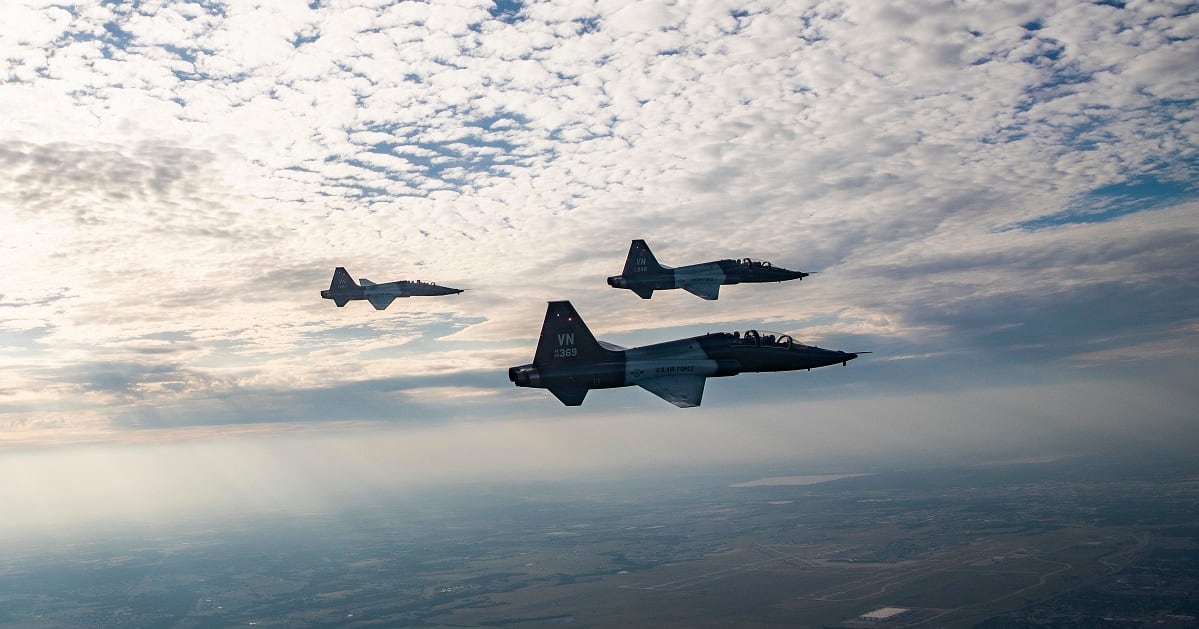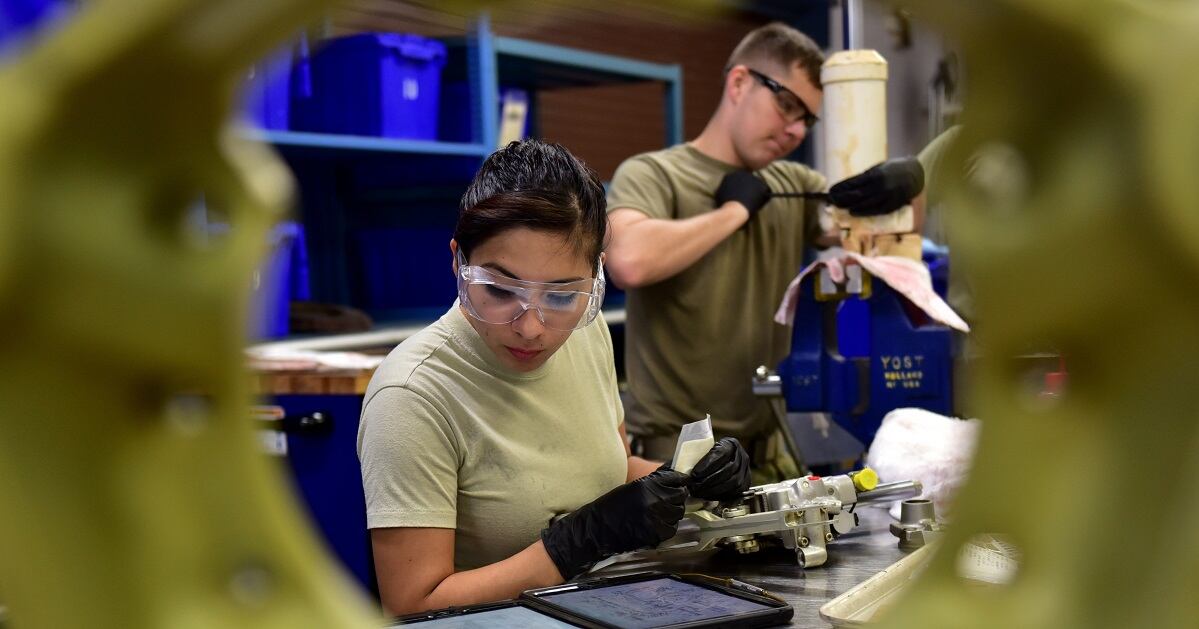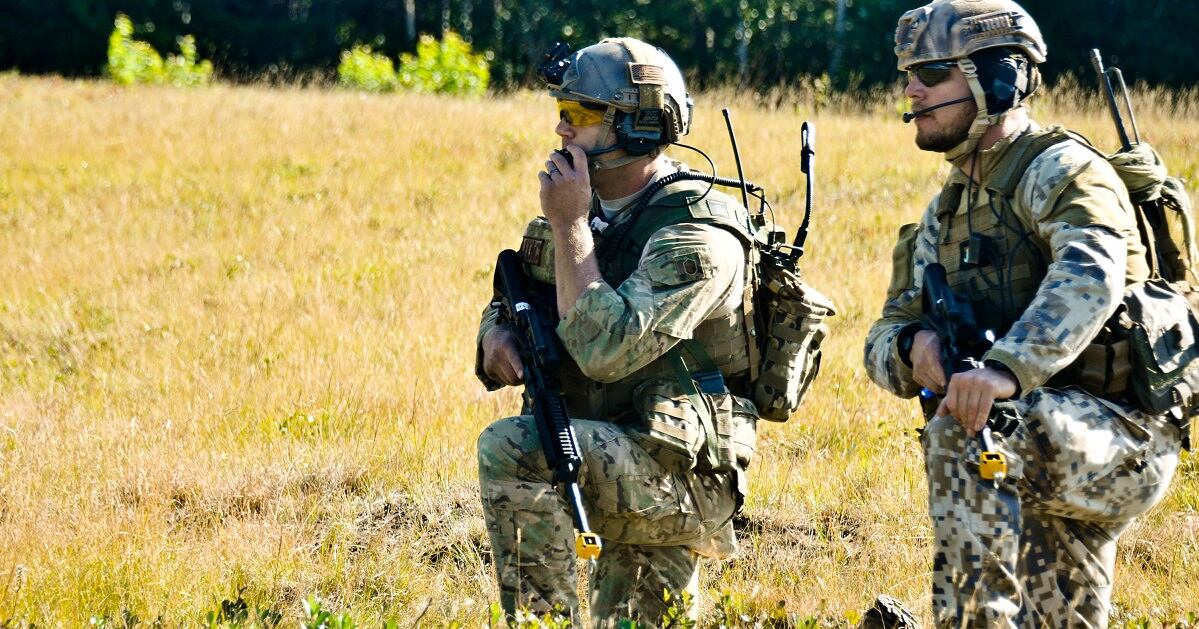Every day, around the world, the airmen we lead are performing a dizzying array of missions to deter our adversaries and, if need be, punish our enemies. The width and breadth of those missions, from deep below ground to the outer reaches of space, is staggering, and includes satellite constellations; fighter jets and bombers; U-2 spy planes; nuclear launch centers; refueling tankers, airlifters and remotely piloted aircraft that feed our global intelligence network and support our special operators.
Every three minutes, an Air Force mobility aircraft takes off or lands somewhere on the planet, delivering critical supplies and personnel exactly where and when needed. We are a global military power because of global reach.
American airmen are running at an unprecedented pace. Side by side with our sister services, we stand watch. America sleeps well at night because we don’t.
It’s been that way for nearly 28 years. In 1991, the nation called upon the Air Force to kick a middle-weight, non-nuclear country called Iraq out of neighboring Kuwait. It took 510,000 active-duty airmen and a fleet of more than 8,510 aircraft to do the job, and we’ve been on the clock ever since. The Air Force today is one-third smaller, with only 327,000 active-duty airmen and 5,300 aircraft, but the peer threats laid out by the 2018 National Defense Strategy are increasing … and we still stand ready.
While our aircraft are aging, our resolve is not. We have worked diligently to maintain personnel and equipment that are ready to fight tonight, providing the nation and our combatant commanders the support they need to address rising peer threats.
So what is a true measure of readiness recovery we owe the American people and their elected leaders? One word: performance. Recently, we were tasked to deploy a squadron of B-52s to the Middle East in response to Iran’s malevolent behavior. They landed at Al Udeid Air Base 48 hours later. We then launched F-22 Raptors to the same part of the world on short notice, just months after they were resettled from Hurricane Michael. No other Air Force in the world can do that.

Consistent budgets are instrumental in helping us rebuild our readiness to the levels necessary for continued dominance over our adversaries. The 2013 sequester was a major setback to the heart of Air Force readiness. No enemy on the planet has taken out more aircraft without firing a shot than did sequestration.
By 2017, many of our combat air forces were proficient at low-end operations, while less than 50 percent of combat air forces were deemed proficient in high-end mission sets needed by combatant commanders. Yet, no different than in other times of readiness crisis, we kept delivering, due to the hard work of our Airmen to include the thousands of “magicians” in our depots keeping a geriatric fleet of aircraft airborne. These were dark days and retention suffered as Airmen and families voted with their feet to leave the service to pursue other opportunities.
The FY17 Additional Appropriations Act stopped the downward spiral and initiated a new era of readiness-recovery. To recover combat readiness in the fastest possible manner and show Congress and the American people we are responsible stewards of the resources we are given (i.e., every dollar we spend is a dollar an American earned … and they deserve a receipt on their investment), we took a different approach to readiness-recovery.
Rather than spread the additional dollars across every weapons system, we analyzed which “pacing units” would be required in the opening days of a peer campaign, to include the simultaneous increased demand from both Gen. Terrence O’Shaughnessy to defend the homeland at U.S. Northern Command and Gen. John Hyten, responsible for maintaining a safe, secure and effective nuclear deterrent at U.S. Strategic Command. In each pacing unit, we developed lead packages required to go forward as an initial wave to support combatant commander plans to halt enemy activity while follow on joint and allied partner forces were brought to bear.
While we are still climbing out of a deficit, we have made significant progress in improving readiness. Today, more than 90 percent of our pacing squadrons are ready to “fight tonight” with their lead force packages. We remain on target to achieve 80-percent ready (including their follow-on forces) by 2020, a full six years faster than previous estimates, as we drive towards the same readiness levels across the remainder of our operational squadrons by 2022.

As a receipt, here are a few specifics to help characterize the advancements we have made with the additional dollars we were given:
♦ Readiness begins with trained airmen. We have grown 24,500 airmen since 2015 and closed the shortage of maintainers by adding more than 4,000. The Air Force is increasing the number of pilots we train from just over 1,000 in FY 2017 to 1,500-plus by FY 2022. Manning levels in our frontline units today are at 95 percent or higher, representing a 6 percent increase since FY 2016.
♦ We are back in the air. At the start of this year, the average was 16 flying hours per month. By the end of the year, these numbers will have increased to 21 flying hours per month. These improved numbers mirror the hours we remember flying during most of our careers.
♦ Once in the air, we have to train against a peer adversary, so we have upgraded our training ranges to simulate a complex integrated defense network. We are boosting space operator training by fielding the Standard Space Trainer, and we are standing up the Virtual Test and Training Center at Nellis Air Force Base, Nevada, to provide a realistic training environment for honing high-end tactics both on the range and in the simulator.
♦ Back on the deck, we are investing in changes to how we maintain our weapon systems. We developed “predictive maintenance” concepts that will allow us to know when parts are failing and thereby decrease unscheduled maintenance in the fleet. We’ve greatly expanded new technologies like 3D printing and “cold spray” to quickly replace hard-to-find parts and to extend the life of existing components. Better depot maintenance practices have returned aircraft to the warfighter early, yielding nearly 9,000 additional days when aircraft were available to fly in FY 2019.
♦ Finally, we are making significant strides in that most important commodity, time. We are working tirelessly to give more back to airmen and their families, through a variety of means, to include eliminating unnecessary administrative tasks and cancelling some exercises.
We are by no means fully recovered. Achieving the readiness rates across the Air Force to the levels America needs will take years of focus, innovation and persistence. American airmen never have, and never will, shy away from hard and complicated tasks. Airmen are attacking readiness challenges with creativity and ingenuity. While we have further to go, we cannot thank Congress enough for removing the guillotine of sequestration and providing the consistent resources we need to continue recovering from a years-long spiral. America deserves no less.
Matt Donovan is acting secretary of the Air Force and Gen. Dave Goldfein is the Air Force chief of staff.






